

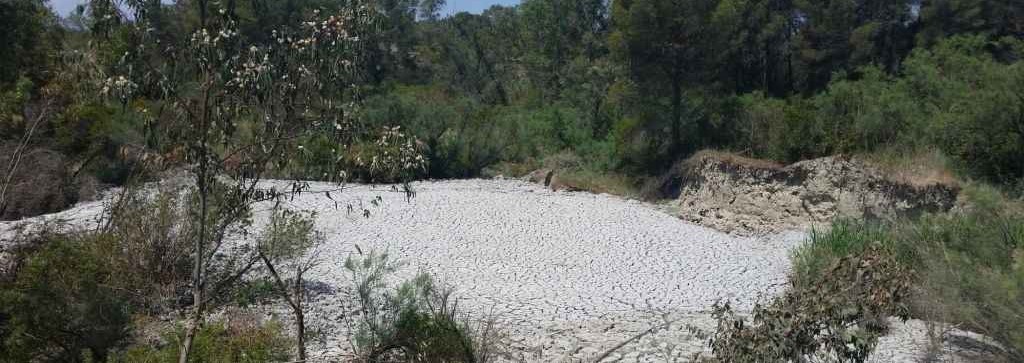


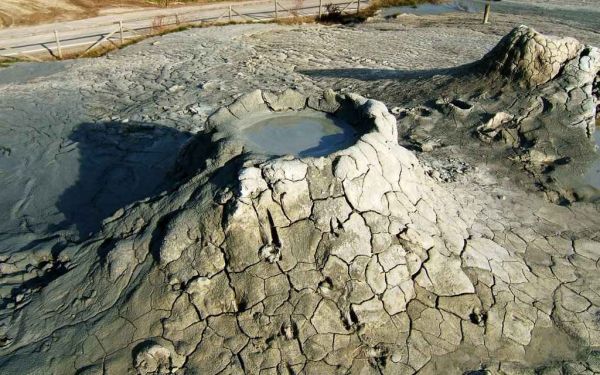
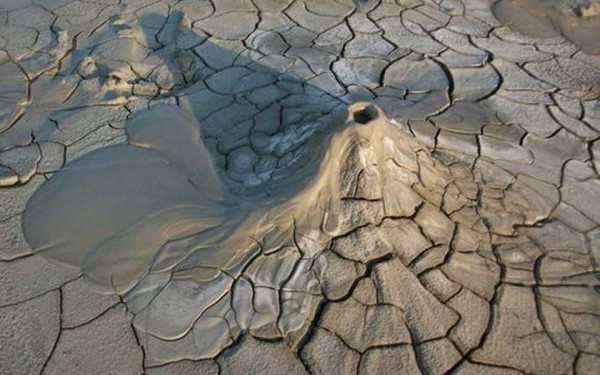
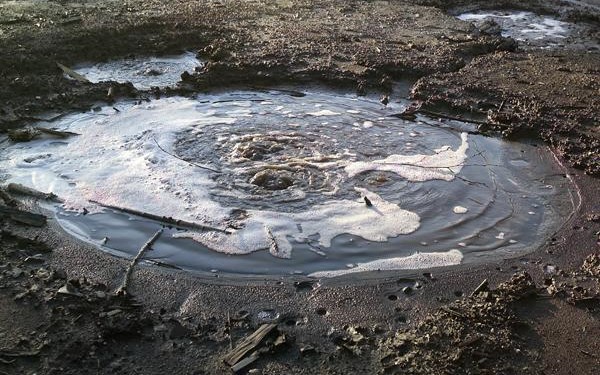
The presence of mud volcanoes was well known to Matera elderly who often apostrophized Rifeccia as a "whore". From some documents, as a matter of a fact, it seems that this adjective was used for the presence in distant times of a woman from a town called Laurenzana living there and of easy costumes. So from the dialectal pronunciation of her town, the name of the district was coined.
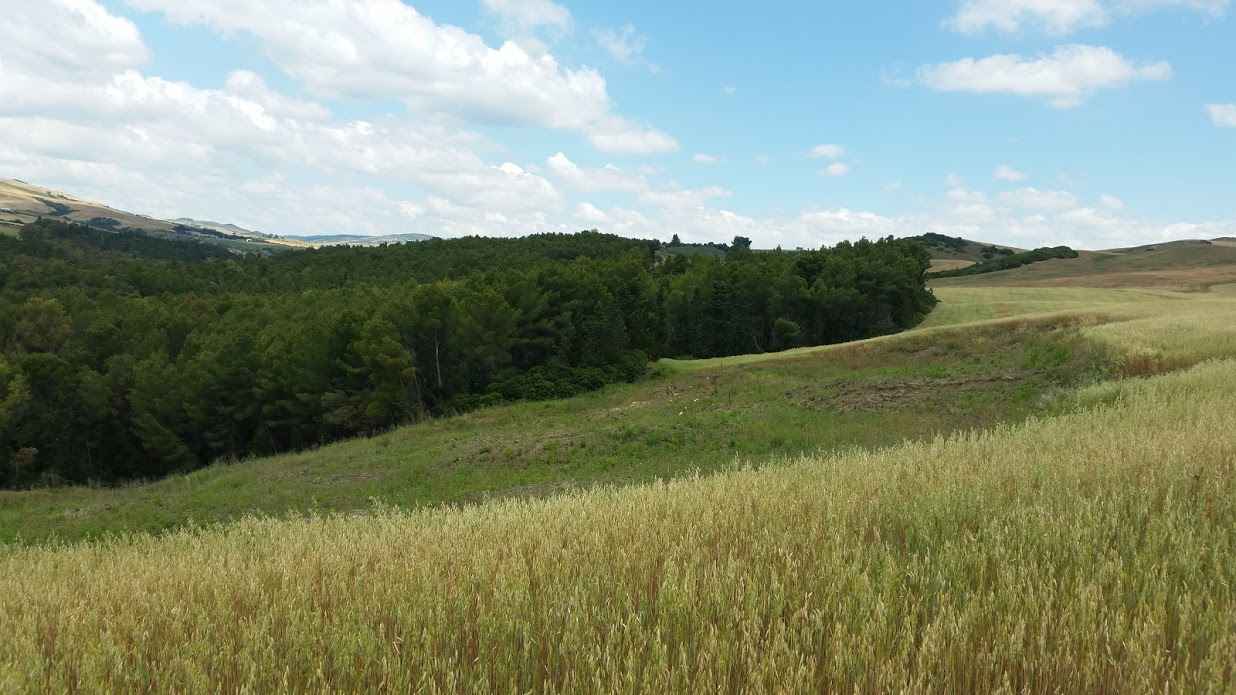
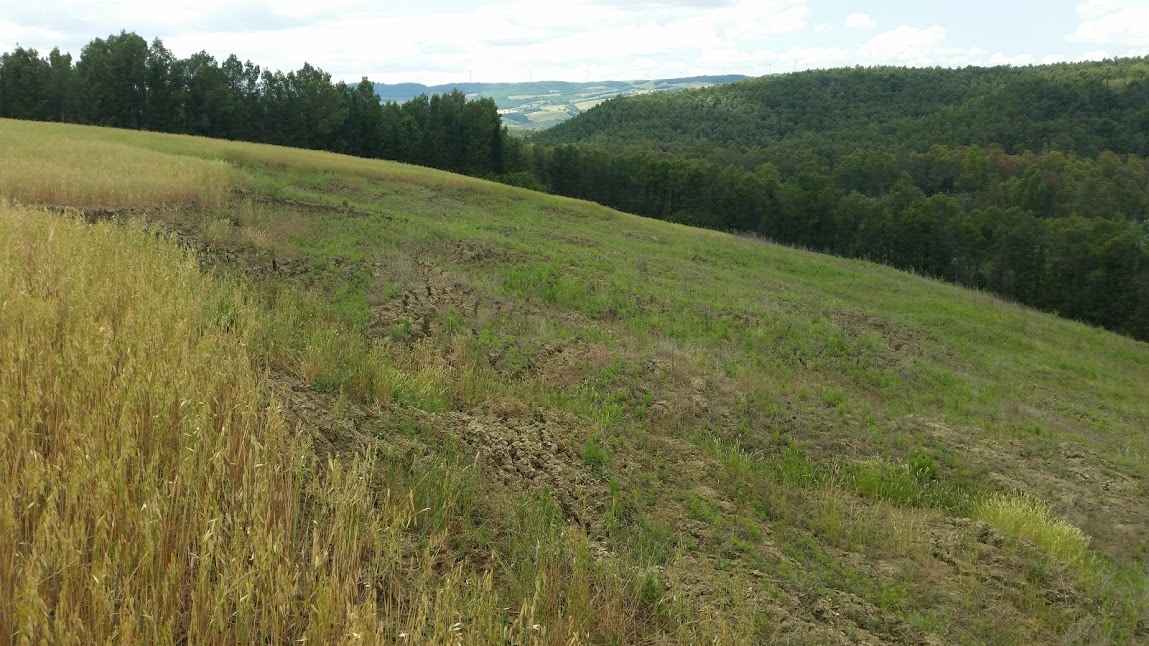
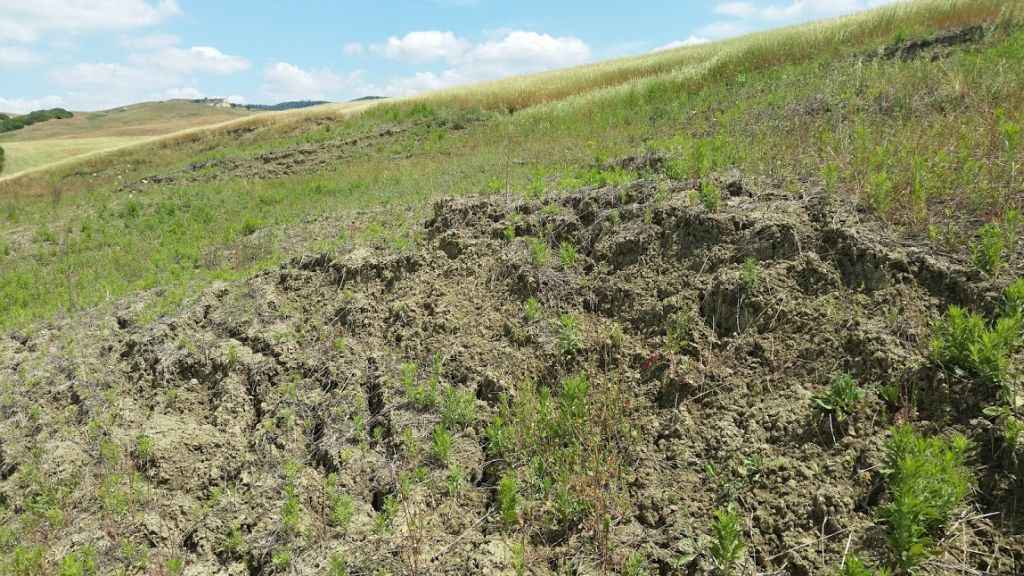
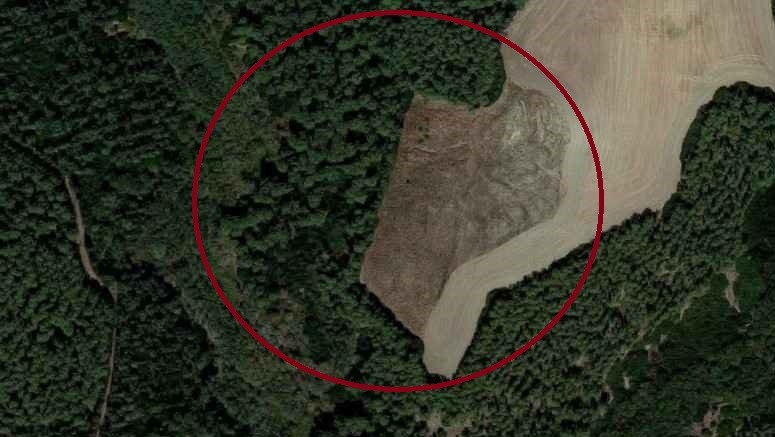
Less vulgarly a legend from Matera tells that due to an earthquake the chatelaine of Timmari (it seems that a castle also existed in the nearby hill) emphatically called "queen", she abandoned her manor on a carriage carrying with her gold and jewels. The escape was not happy ending because the carriage was swallowed up in a mud volcano with the horses that pulled it. It is not clear whether this event is associated with the earthquake that hit Timmari on 10 November 1634 but the presence of mud volcanoes in the area has been known for many centuries. The feudal lords of the area, the Gattini family, in their noble title dating back to 10th century the Castle of Timaris (Timmari) was mentioned
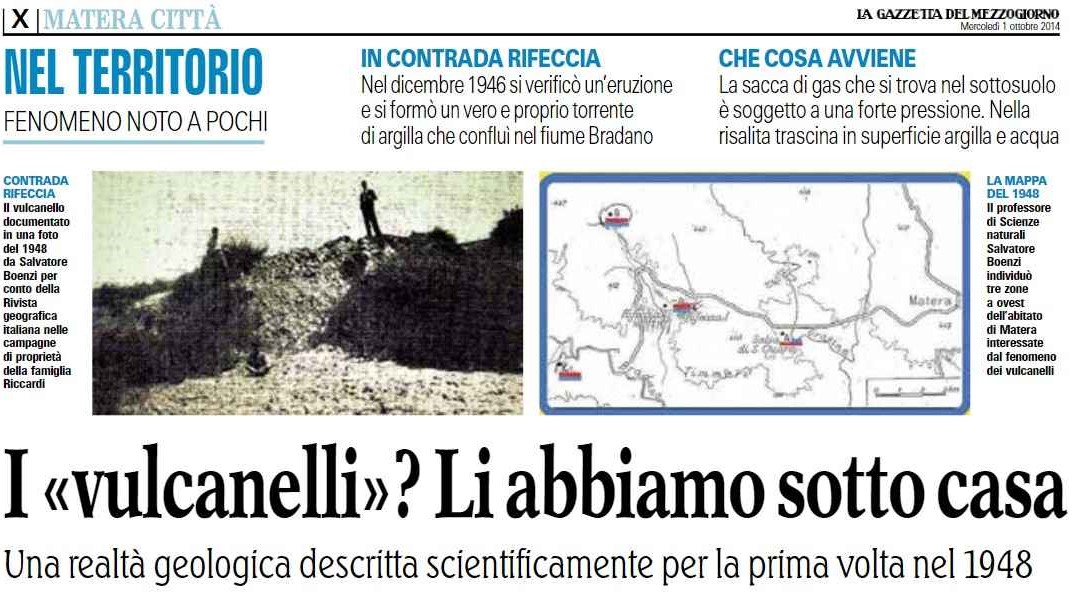
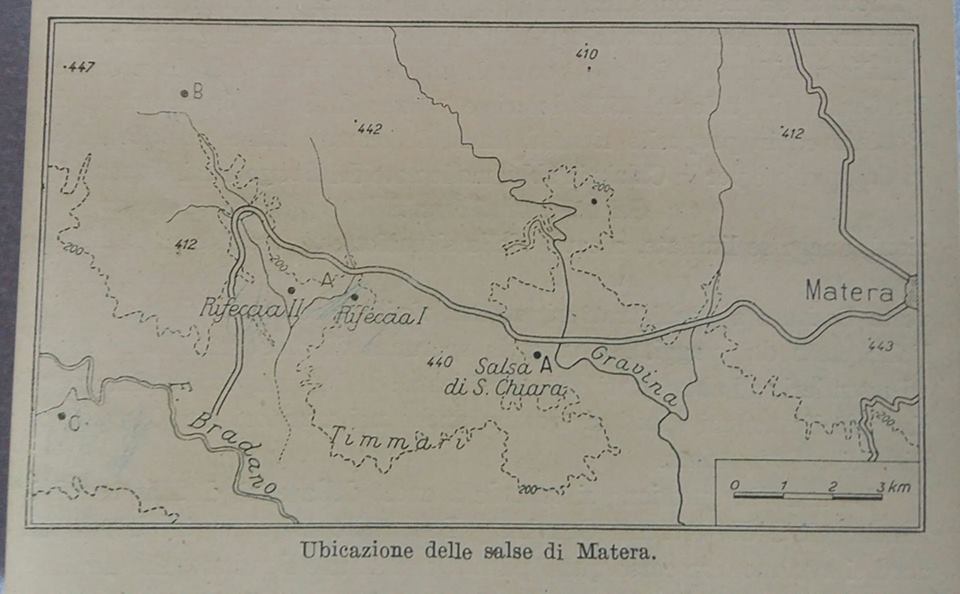
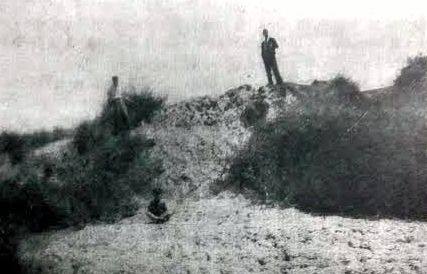
The mud volcanoes in the area were first studied in 1948 by professor Salvatore Boenzi. In those years E.N.I. (National Hydrocarbures Authority) had begun to explore the possibility of exploiting the gas fields of the Lucanian valleys and in that year there were strong secondary volcanism manifestations. Important quantities of mud were spilled from a mud volcano near Montalbano Jonico and the same happened in Rifeccia. In both cases, the quantity of sludge emitted was such that the effusive material poured into the riverbed of the respective Agri and Bradano rivers. It was so that the then young professor of Natural Sciences and principal of several secondary schools, Salvatore Boenzi, studied the mud volcanoes in the area. Around Rifeccia area there were discovered in number of 5. Today there are no traces of the "Salsa of Santa Chiara" near the homonymous farmhouse along the Gravina di Picciano stream, but the presence of the other 4 is evidenced by a renewed activity as in the spring of 2017.


A very peculiar and suggestive phenomenon in some respects, appears more frequent in areas prone to earthquakes. We speak of "mud volcanoes", a little known phenomenon.
 Mud volcanoes are geological structures that are generated as a result of spillage on the surface of the Earth or on the seafloor, clayey materials in the form of fluids and mud, mixed with a mixture of water and in some cases gas. Generally, they are present in compressive tectonic contexts or in geological contexts where the main tectonic figures in play tend to collide with each other.
Mud volcanoes are geological structures that are generated as a result of spillage on the surface of the Earth or on the seafloor, clayey materials in the form of fluids and mud, mixed with a mixture of water and in some cases gas. Generally, they are present in compressive tectonic contexts or in geological contexts where the main tectonic figures in play tend to collide with each other.
One of the main protagonists of the formation of mud volcanoes is represented at depth by the presence of thick sequences of fine and poorly consolidated sediments, strongly linked by the geological-structural and hydraulic conditions of the subsoil. That is to say, we speak of lithologies with granular dimensions sand-clay which, during the geological evolution, have not undergone strong lithostatic pressures deriving from sediments accumulated above them. For various factors, it is possible that there is rapid and abundant sedimentation over a short period of time, from a geological point of view. This creates a slightly compact sedimentary sequence with the presence of fluids between the interstices of the different granules. Due to the lack of diagenization (compaction) of the sediments, the liquid part would not be expelled and this would promote a lower density on the part of this set of sediments, in relation to the overlying sediments, so as to allow ideal conditions for ascent.
We must now understand what may be the main factors that would allow these fluids to emerge. For the mechanism to be triggered, it is important that there is a sudden increase in pore pressure between the granules that make up the sediment. In nature, there are various mechanisms capable of producing an increase in pore pressures inside sediments, so as to generate the formation of a mud volcano.
Some of them are listed:
a) Tectonic forces, particularly during compression phases by earthquakes
b) Presence of hydrocarbons
c) Dehydration of the clay component
a) As happened recently between the Marche and Umbria or as happened in 2012 with the earthquake in Emilia Romagna, the triggering cause could come from a strong seismic shock. Seismic stress can cause pressure transfer from sediment granules to pore water (present between one granule and the other). When such a deposit is confined between two impermeable layers, the water pressure increases, at a critical point, beyond which it cancels the pressure between the granules and the entire deposit (sediment plus water) behaving as a fluid. To evacuate this overpressure, the liquefied deposit seeks an escape route by pushing towards areas of lower pressure, or upwards, through fractures and discontinuities present in the rock. On the surface, there is the phenomenon of liquefaction or fluidization that occurs through mud volcanoes.

b) Gaseous hydrocarbons such as methane or carbon dioxide, with very low molecular weight, tend to reach the surface more quickly. When this occurs, the non-didiagenized sediments are supported and tend to rise to the surface, resulting in real flows similar to those produced by volcanic lava. In addition, methane, if present, produces thermal expansion during ascent, resulting in a decrease in its density and an increase in fluid pressure in the sediments. In this case, the resulting methane and sludge emissions will be so strong that real gas explosions can occur at even high temperatures, very dangerous for those who are nearby.

c) Clays are minerals that chemically exhibit complex crystalline structures, often containing layers of water molecules (H2O). With more water, clay minerals tend to expand their chains and take up more space. When a compression process occurs on clay sediments, due for example to an increase in the specific weight of the overlying rocks, the liquid part is expelled from the structures and brought to the surface by preferential channels present in the rock (fractures, cavities, discontinuity in general). In this way, the phenomenon of dehydration of clay minerals is obtained with a consequent compaction of sediments.
 Mud volcanoes are also present in Italy in the Apennines, with more spectacular manifestations especially in Emilia Romagna and Sicily. In Sicily, one finds the "Macalube" of Aragona and the "Salinelle" of Paternò, while the "Salses" of Nirano are famous in Emilia-Romagna. All the phenomena occur in a compressive geological-structural context, however linked to the pressure exerted by the gas clusters compacted inside the clay sediments which, in particular in Sicily, generate eruptions of the "explosive" type. Other mud volcanoes were discovered in the periadriatic area between the Marches, Abruzzo and L'Aquila during the 2009 earthquake due to seismic tremors causing the deposit to settle.
Mud volcanoes are also present in Italy in the Apennines, with more spectacular manifestations especially in Emilia Romagna and Sicily. In Sicily, one finds the "Macalube" of Aragona and the "Salinelle" of Paternò, while the "Salses" of Nirano are famous in Emilia-Romagna. All the phenomena occur in a compressive geological-structural context, however linked to the pressure exerted by the gas clusters compacted inside the clay sediments which, in particular in Sicily, generate eruptions of the "explosive" type. Other mud volcanoes were discovered in the periadriatic area between the Marches, Abruzzo and L'Aquila during the 2009 earthquake due to seismic tremors causing the deposit to settle.
In Basilicata there are small volcanoes, more or less active, in the municipality of Cancellara (PZ), Ferrandina (MT) and near the Timmari hill near Matera. These are all mud buildings present in the geological context of the Bradanique Pit at its easternmost edge towards the Murge. Their origin is undoubtedly linked to a type of animated tectonic activity in antiquity and a less recent era.
